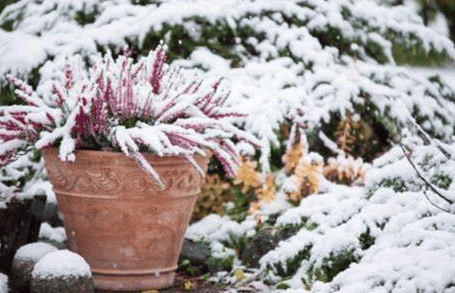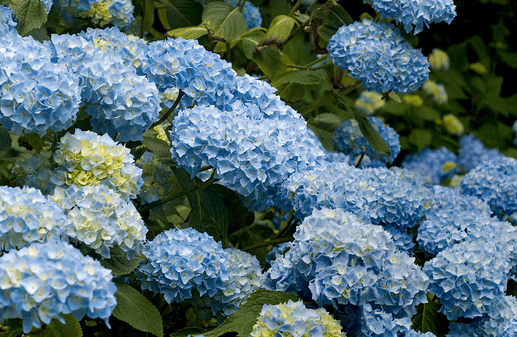Winter Maintenance Guide for Flower Beds in Central Pennsylvania
Winter is coming, but that doesn’t mean your garden should go dormant. Proper winter maintenance for flower beds not only keeps your landscape tidy but ensures a thriving garden season come spring. For residents of Central Pennsylvania, where winters can be unpredictable, caring for your flower beds is essential to protect your plants and set them up for future growth.
This guide will walk you through understanding Central PA’s winter climate, preparing your flower beds for the season, and providing plant-specific tips to keep your garden healthy. By the end, you’ll have actionable steps to protect your landscaping and ensure your yard is ready to bloom again when the frost melts.
Understanding Central Pennsylvania’s Climate
Central Pennsylvania’s climate comes with unique challenges for gardeners. The region typically experiences snowy winters with average low temperatures hovering around 19°F in January. While some winters may feel milder, sudden cold snaps and unpredictable weather patterns can stress your plants.
Key challenges include:
Variable Snow Cover: Snow acts as a natural insulator, but inconsistent snowfall leaves soil and plants exposed to harsh frosts.
Heavy Rainfall and Freeze-Thaw Cycles: Winter rain followed by freezing temperatures can weaken plant roots and create ice pockets within flower beds.
Wind Chill: Strong winds strip the moisture from exposed plants and can damage sensitive species.
Understanding these challenges can help you take proactive steps to protect your flowerbeds through the colder months.
Preparing Flower Beds for Winter
Prepping your garden for winter in Central PA isn’t just about aesthetics—it’s about protecting your plants and soil. Here’s what you need to do:

Clean and Remove Dead Foliage
Before the first frost hits, take time to clean your flower beds.
Remove Dead Plants: Pull out annuals that are done for the season and discard any diseased plants to prevent spreading pathogens to your garden next year. Healthy clippings can be added to your compost pile.
Trim Perennials: While it’s essential to prune dead or damaged portions of your perennials, consider leaving some plants (like ornamental grasses) standing for winter interest and seed heads for birds.
Weed Thoroughly: Eliminating weeds now makes your spring gardening efforts much easier and prevents them from spreading.
Mulching to Insulate Soil
Central Pennsylvania’s dramatic temperature swings can disturb your soil and roots. Mulch acts as a protective layer to moderate soil temperature and retain moisture.
Opt for organic mulches like shredded leaves, wood chips, or straw.
Add 2–4 inches of mulch around your flower beds, ensuring you leave space around plant crowns to prevent rot.
Avoid over-mulching, as this can lead to excessive moisture and fungal growth.
Protect Sensitive Plants
Certain plants are particularly vulnerable to winter’s chill. Ensure their survival with these protective measures:
Wrap in Burlap: Protect shrubs and delicate plants from wind damage with burlap wraps or breathable plant covers.
Use Cloche Covers: Small glass or plastic cloches can shield tender perennials.
Pot Up Fragile Plants: Dig up your most sensitive plants, place them in pots, and relocate them to a garage or indoor space for overwintering.
Plant-Specific Tips for Central Pennsylvania
Not all flowers handle winter conditions the same way. If you want to give your garden a bit of extra love, tailor your care to suit some common flowers in the area:
Black-eyed Susans (Rudbeckia)
Care: Cut back dying flowers and stems but leave the seed heads for wildlife. Mulch lightly around the base for root insulation.
Quick Tip: Birds love the seeds, so consider leaving a few stalks standing.
Hostas
Care: Once leaves are frost-damaged, cut them down to the ground to avoid slug and fungal problems in spring. Add a fresh layer of mulch to protect roots.
Quick Tip: Avoid late-season fertilization, as it can encourage new growth that’s vulnerable to frost.
Hydrangeas
Care: For smooth hydrangeas, prune back stems to about 12 inches above the ground. Protect the roots with a thick layer of mulch. For bigleaf hydrangeas, leave stems intact but cover with burlap or wrap to safeguard next season’s blooms.
Quick Tip: Don’t forget to mark the plant location if cutting stems low—this ensures you won’t accidentally disturb it in spring!

Coneflowers (Echinacea)
Care: Leave coneflowers standing through winter; their seed heads provide food for birds. Trim dead growth in early spring instead.
Quick Tip: Add a ring of straw mulch around the base for extra root protection.
Tulips and Other Bulbs
Care: Apply a layer of mulch after planting your bulbs in the fall to regulate soil temperature and deter pests. Be sure to keep squirrels and rodents at bay with chicken wire laid over the soil.
Quick Tip: Plant bulbs deeper in the soil (around 8 inches) to prevent frost damage.
Healthy Flower Beds Begin with Winter Preparation
Winter might bring a temporary pause to your garden’s growth, but it doesn’t have to mean neglect. Cleaning your beds, mulching, and protecting vulnerable plants are simple investments that yield big returns when spring arrives.
If the thought of tackling winter gardening tasks solo feels overwhelming, Breneman’s Landscaping is here to help. From preparing your flower beds to landscaping advice tailored to Central Pennsylvania, we’ve got you covered.
Call us now for a free quote and ensure your garden is ready to take on winter—so you can enjoy beautiful blooms next season.
